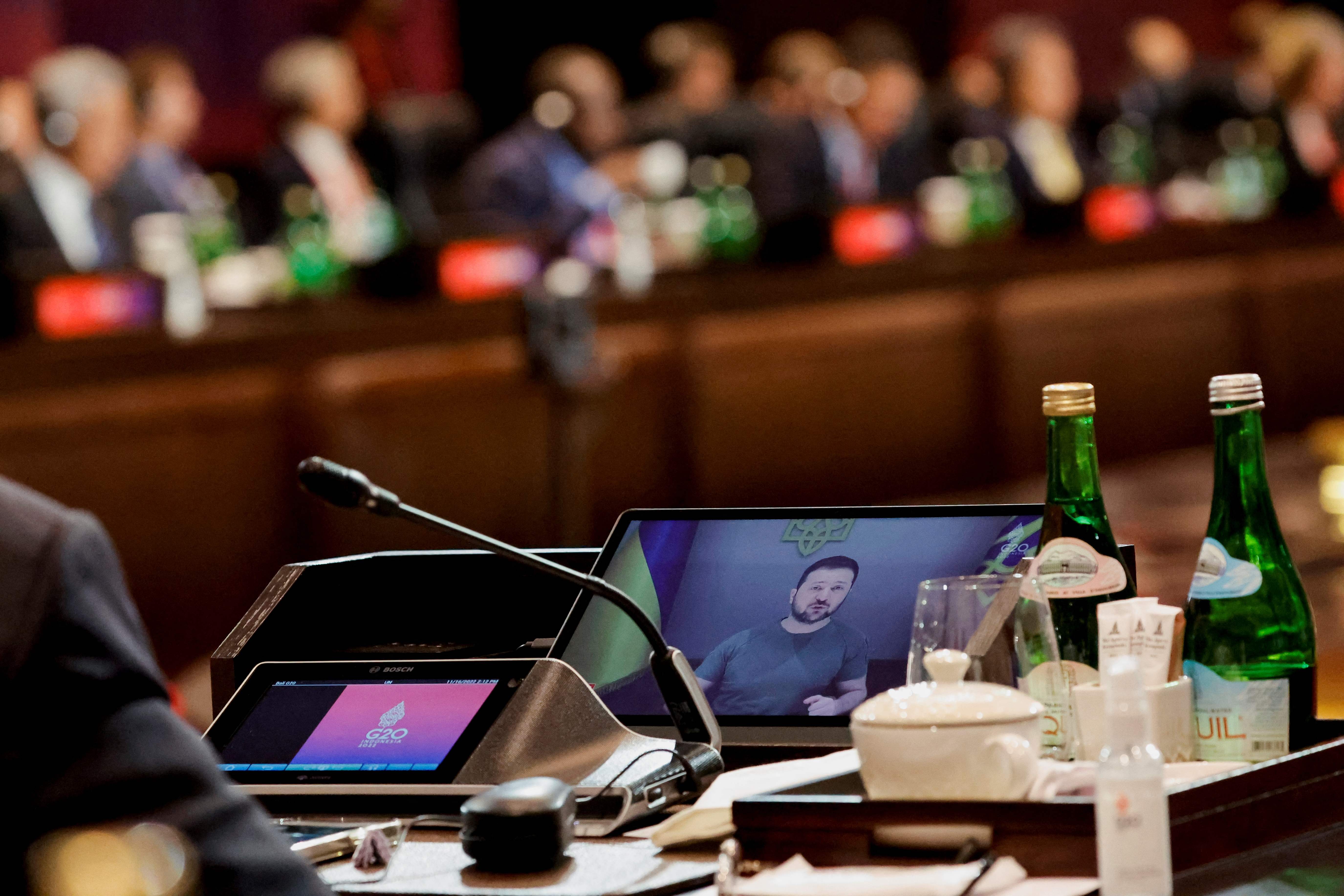The Poland missile incident is a reminder of how wars can so easily escalate
Editorial: It arrived as the Russians were launching yet another mass indiscriminate attack on Ukrainian cities

In war, accidents happen, and wise generals tend to hold to the axiom that “first reports are usually wrong”. So it has been with the airborne missile that landed in Poland close to the Ukrainian border, which killed two Polish civilians and caused some damage to property.
It arrived as the Russians were launching yet another indiscriminate attack on Ukrainian cities, and it looked perfectly possible that one of their rockets had either gone astray or had struck Nato territory “accidentally on purpose”.
The immediate lesson that has been learned is that the West needs to supply more and better air-defence systems to Eastern European allies, and to Ukraine itself. Russia, failing on the battlefield, clearly has a strategy of destroying civilian infrastructure to grind down Ukrainian resistance. Hence the random terror attacks on apartment blocks, water supplies and power stations.
Historical experience suggests that such attacks actually only serve to stiffen civilian morale and determination to prevail – though they still need to be stopped. As a precaution, and not a provocation, Nato might also usefully station more defensive units on its eastern flanks.
However, the early speculation, though plausible, that it emanated from Russia may have been mistaken. President Biden has publicly suggested as much, and Nato secretary general Jens Stoltenberg was studiously non-committal during his press conference. It is just as well that cool heads did indeed prevail, and that the West remained calm but vigilant as the details of the incident emerged in the darkness.
It reminded the world that Nato is not some trigger-happy aggressor, but is determined to discover the truth and form a consensual view before any action is taken. Much is rightly made of the deterrent power of the collective security clause in the Atlantic Charter, Article Five, that an attack on one is an attack on all.
However, Article Four, which requires consultations between close allies, is equally valuable in preserving unity and peace in dangerous conditions. It has fulfilled its function admirably, and in stark contrast to capricious, personal rule in the Kremlin.
The Polish incident, then, should also stand as a reminder that wars can also escalate all too easily through misadventure and misjudgement. The irony is that this most perilous moment in the conflict comes just as the fighting will wind down as winter draws in and temperatures drop below freezing.
“General Winter” tends to favour defenders rather than attackers, and given that the recent dynamic has been of Ukrainian advances and Russian retreats, the result will be stalemate for some months, albeit with constant Russian bombardment of civilian areas. It opens the possibility of talks and diplomatic initiatives, during a period when the war is, literally, frozen.
To keep up to speed with all the latest opinions and comment, sign up to our free weekly Voices Dispatches newsletter by clicking here
President Zelensky chose a video call to the G20 to outline his terms for peace, which is at least a signal of intent. They may be unrealistic, from a Russian point of view, but it is a start. America and Russia are talking and, if they have not done so already, need to establish diplomatic back channels to promote the tentative steps to peace, and ensure incidents such as the random, possibly Ukrainian, rocket in the Polish field don’t run out of control into some nuclear conflagration.
Behind that, Nato and Ukraine have some looming strategic decisions. What happens, for example, if and when the conflict turns into a more permanent stalemate, an immobile trench-based warfare with neither side able to make a decisive move? Does Ukraine accept that? Should Nato?
What happens, on the other hand, if fresh Ukrainian spring offensives with the best of western armaments push Russian forces back to the border, perhaps even including the reconquest of Crimea? What, in other words, does a lasting peace look like? With Ukraine in Nato and the EU; or forbidden from joining?
Beyond recovering territorial integrity, Ukrainian war aims have never been fully defined, and still less what Nato wishes to achieve. The unspoken but relevant corollary is how unconditional and indefinite Nato’s support for Ukraine will be in 2023. The firmer Nato’s backing for Ukraine, the sooner a victory will come; but the West must mean what it says. Sooner or later, such queries will demand answers.






Join our commenting forum
Join thought-provoking conversations, follow other Independent readers and see their replies
Comments